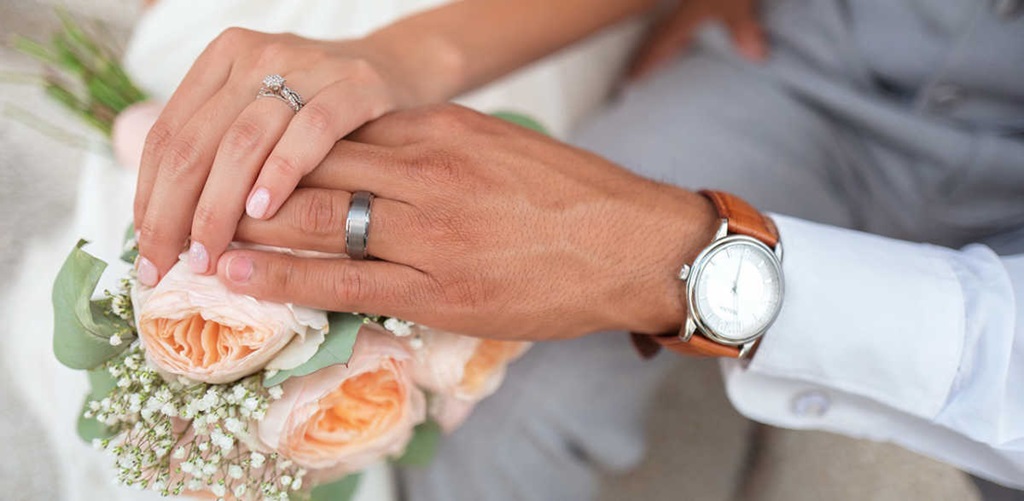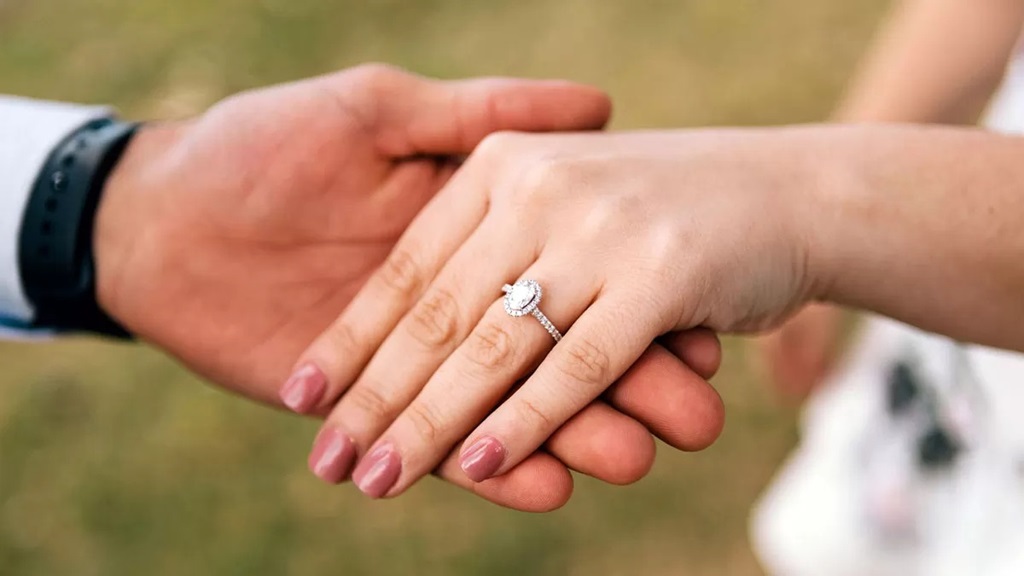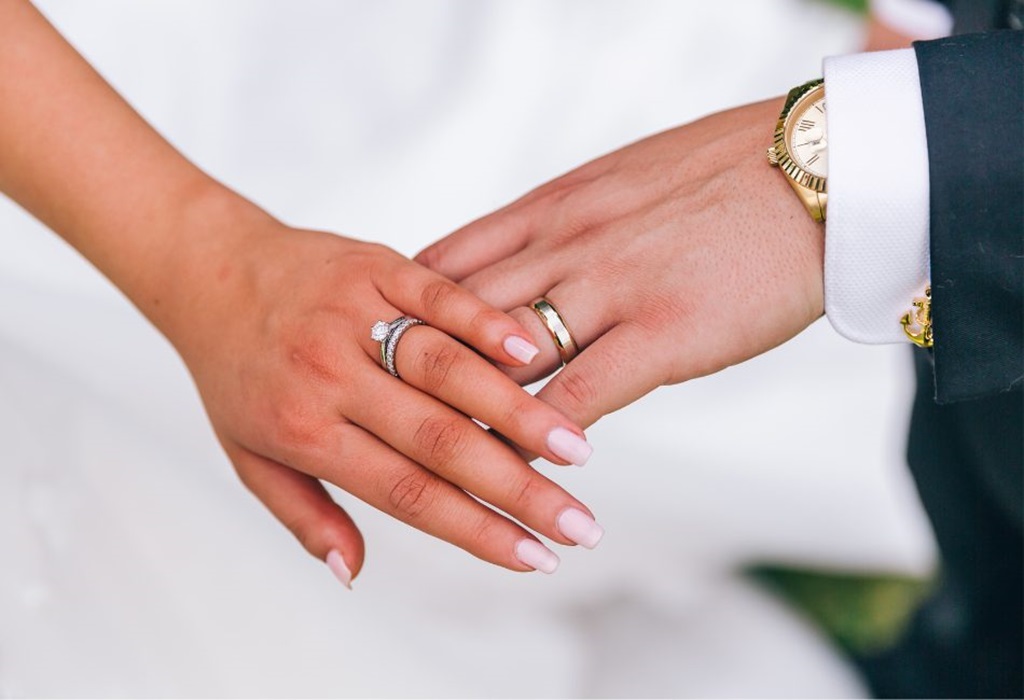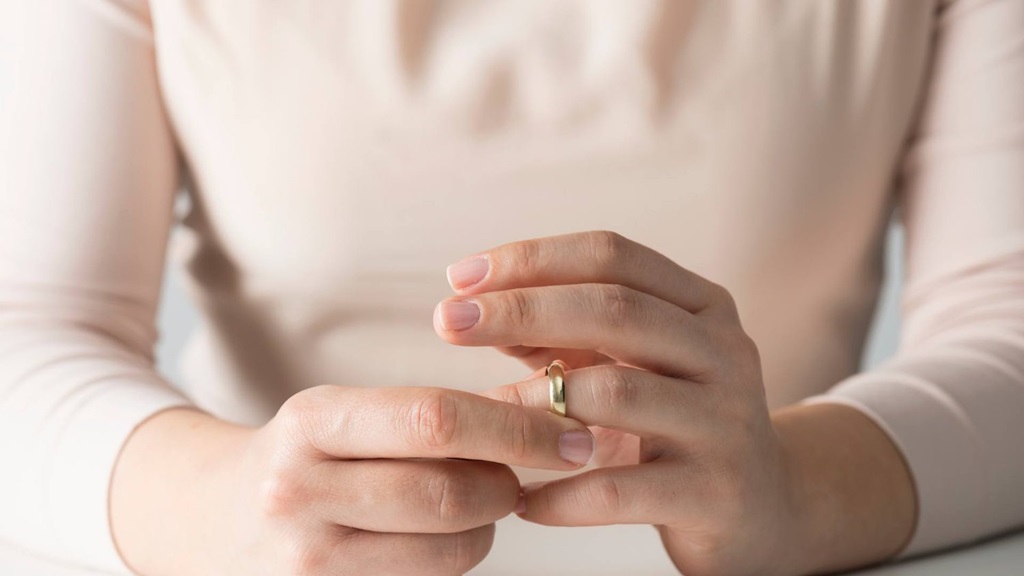Getting married is one of the most exciting times in a person's life. After the…

Why Wedding Band on Left Hand? Discover Now!
The tradition of wearing a wedding band on the left hand has deep historical and cultural roots that have evolved over centuries. The practice can be traced back to ancient Egypt, where it was believed that the “vena amoris” or the “vein of love” ran directly from the fourth finger of the left hand to the heart. This notion persisted through various cultures and civilizations, including the ancient Romans, who adopted the custom. Why wedding band on left hand? The placement of the wedding ring is steeped in history, dating back thousands of years.
The History Of The Wedding Ring
The exchanging of rings during a marriage ceremony dates back to ancient Egypt, where the circle shape signified eternity and never-ending love. Archaeologists have found evidence of couples exchanging rings made of braided reeds or bone as far back as 3,000 BC!
Ancient Romans and Greeks also wore wedding rings, believing the fourth finger (our modern ring finger) contained a special vein that ran directly to the heart. This mythical “vena amoris” or vein of love made the left hand a natural choice for wedding jewelry.
While wedding rings fell out of favor during parts of the Middle Ages, by the 13th century they had become widely popular again. As Christianity spread, the ring became a symbol of God’s everlasting love and fidelity.
However, at the time, the wedding ring was worn on the right hand instead. It wasn’t until later that the ring shifted to the left hand where we still wear it today.
How The Wedding Ring Shifted To The Left Hand

During the 16th and 17th centuries, the wedding ring switched from the right hand to the left hand where we now wear it in Western culture. There are a few theories as to why this shift occurred:
1. Influence of other European countries
In parts of Europe like Germany and England, the wedding ring was traditionally worn on the left. As these countries exerted their cultural influence throughout the Renaissance and Enlightenment eras, the custom of wearing rings on the left gradually spread.
2. Belief that the left hand was better
During the Middle Ages and into the Renaissance period, there was a belief that the right hand symbolized strength and dominance, while the left hand represented love and romance. Since a wedding ring signifies love, it made sense to shift it to the tender, romantic left hand.
3. Ease of wearing a wedding ring
For most right-handed people, the left hand allows an easier wearing experience. Putting on and taking off a ring is simpler on the non-dominant hand, so the ring shifted to the left for convenience.
4. Display of the wedding band
Wearing the wedding band on the left hand keeps it in full view. Since the right hand is used more for daily tasks, a ring in that spot is often concealed or covered up. The left-hand position allows the symbol of marriage to be openly displayed.
No matter the exact origins, the switch to the left hand became standard practice by the 18th century, as we still do today.
The Ring Finger And Its Symbolism
Of all the left-hand fingers, our society wears the wedding band on the fourth finger, commonly called the “ring finger.” But what’s so special about this particular digit?
The Latin word for fourth finger is “digitus medicinalis.”
In Latin, the fourth finger is known as the “digitus medicinalis” or the medical finger. During medieval times, people believed a vein (vena amoris) ran directly from that finger to the heart. This mythical vein made the ring finger the natural choice for a wedding ring meant to signify eternal love.
It’s the weakest, most sensitive finger.
Compared to the other fingers, the ring finger is the least used and most delicate of the bunch. Coupled with its proximity to the heart, the ring finger’s fragility makes it a fitting symbol of romantic love.
The ring won’t interfere with daily tasks.
The ring finger doesn’t get in the way of most everyday activities like writing, cooking, or brushing your teeth. The wedding band can comfortably adorn the hand without interfering with practical tasks.
It complements the middle “engagement” finger.
On a ring wearer’s left hand, the wedding band complementarily borders the middle “engagement” finger. The pairing creates balance and distinction between the two all-important rings.
So in summary, the ring finger sits in the prime “love” position closest to the heart. Its relative delicacy also suits the romantic and sentimental purpose of the wedding ring.
How Other Cultures Wear Wedding Rings

While most Western cultures wear wedding rings on the left fourth finger, there are some beautiful variations from around the world:
- Germany: Couples traditionally wear bands on their right hands. The groom will move his ring to the left hand after the ceremony.
- Russia: Both partners wear their wedding rings on the right hand. They believe this better signifies an open heart.
- India: Brides wear extensive wedding jewelry including rings on multiple fingers and toes, not just the left hand. The rings symbolize the marital bond.
- China: The bride wears a wedding band on her right ring finger, then moves it to the left hand later. Grooms often opt for simpler bands on the left.
- Latvia: Married individuals wear their band on the left with the crown facing inward toward the heart. Single people switch it around with the crown facing outward.
- Colombia: Couples exchange three rings at their ceremony to symbolize past, present, and future. The rings are worn on the left hand.
Customs For How To Wear Your Wedding Ring
Once married, there are traditional “rules” many cultures follow for wearing a wedding band:
- Wear it on top of the engagement ring to symbolize marriage coming first.
- Don’t remove it unless absolutely necessary for tasks, safety, etc.
- If removed, keep your band on your bedside table overnight. Don’t leave it off randomly.
- Take it off sparingly to retain the meaning. Don’t let the significance fade.
- Prioritize wearing your ring over other jewelry like watches, bracelets, etc.
- Only remove it if your profession requires excess hand usage like surgery or craftwork.
- Don’t fiddle with taking it on and off. Wear it consistently.
- Turn the band inward toward your heart as a romantic gesture.
- Engage in an official “ring warming” ceremony before exchanging.
- Switch your ring to the right hand if your relationship status changes.
Following these traditional etiquette practices preserves the symbolism. But ultimately, find a comfortable way to wear it that retains personal meaning between you and your partner.
Why The Right Hand Can Signify Divorce Or Widowhood

In parts of Europe and North America, moving your wedding ring from the left hand to the right has special significance:
To signify divorce
If a marriage ends in divorce, individuals may move their band to the right ring finger. This signals they are no longer in the marriage but still keep the ring close.
To indicate widowhood
A surviving spouse may shift their wedding ring to the right hand after their partner passes away. It preserves the original wedding band while demonstrating their current single status.
The right-hand ring placement indicates a major shift in relationship status for the wearer. It allows them to keep wearing their ring comfortably and conspicuously.
Conclusion
From ancient Egypt to the modern day, the wedding band on the left ring finger has symbolized everlasting love and commitment. Though customs vary worldwide, the gesture unifies married couples across cultures. No matter the historical origins, wearing a wedding ring retains personal significance if you infuse it with your own romantic meaning. Let the band remind you and the world of the loving partner by your side.
FAQs
Why is the wedding band plain while the engagement ring is flashy?
Typically, the wedding band is a simple, unadorned metal ring while the engagement ring has a sparkling gemstone. This symbolizes the marriage itself as the fundamental relationship basis. The flashy engagement ring represents the excitement of proposals and getting engaged.
When should you start wearing the wedding band?
You begin wearing your wedding band immediately after exchanging vows at the wedding ceremony. Wear it on your left hand from that day forward to proudly display your new marital status.
Can you wear your wedding band on your right hand instead?
It’s your choice! Though Western cultures default to the left hand, some individuals prefer to wear their band on the right. As long as the placement has meaning for you and your partner, it doesn’t matter.
Is it OK to temporarily remove your wedding ring?
It’s generally advised not to casually remove your band since that diminishes the symbolism. But it’s perfectly acceptable to take it off when absolutely necessary for work, exercise, safety reasons, etc.
Do both spouses have to wear a wedding ring?
No – while most married couples adopt rings, it’s not mandatory. Depending on culture, profession, or personal taste, one or both spouses may opt not to wear a band. What matters most is mutual comfort.



